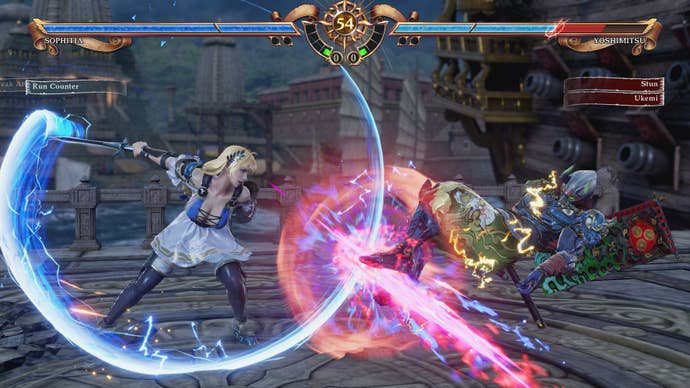Soulcalibur 6 Review
A tale of souls and swords is told again.
This article first appeared on USgamer, a partner publication of VG247. Some content, such as this article, has been migrated to VG247 for posterity after USgamer's closure - but it has not been edited or further vetted by the VG247 team.
What surprises me the most about Soulcalibur 6 is how much hasn't changed over the years. Sitting down to play the game for the first time, I was struck by how easy and familiar it was. I picked up the controller and I was transported back to playing Soulcalibur on Dreamcast with my friends or making custom characters in Soulcalibur 3. Like Bandai Namco's other fighting series, Tekken, there's a strong sense of continuity and familiarity in Soulcalibur 6.
Soulcalibur 6 is also somewhat of a mea culpa for the Project Soul team. 2012's Soulcalibur 5 was a revamped entry intended to bring in new players, but it also missed much of what made the series great for long-term fans. The story mode was weaker than previous entries, and many fan-favorite characters missed the cut, including Sophitia, Taki, and Seong Mina.
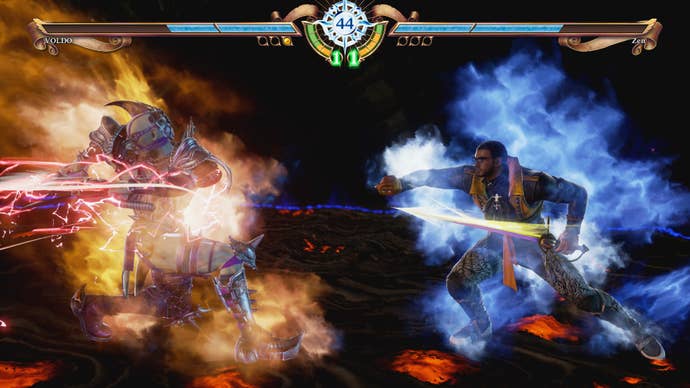
In contrast, Soulcalibur 6 ensures the core pillars of play from the series' past are represented and the cast is a solid mix of veterans with a few new faces. From previous games, players can choose from Siegfried, Nightmare, Zasalamel, Ivy, Xianghua, Maxi, Kilik, Sophitia, Raphael, Seong Mi-na, Mitsurugi, Talim, Taki, Voldo, Yoshimitsu, Astaroth, and Cervantes. Former boss character Inferno is unlockable within the game's Soul Chronicle mode, while the bladed hula hoop of Tira can only be unlocked if you pick up the $29.99 Season Pass.
What about the new characters though? Groh puts the "edge" back into the series as the most brooding edgelord character we've seen in some time. He's the first Nordic character in the series, sporting an eyepatch, a full-arm gauntlet, and a Darth Maul-style dual saber. Groh can switch stances (something that's become rather normal in the series), allowing him to use his dual sabers as a separated pair or a single weapon. His fighting style is somewhat straightforward, but the ability to switch stances and teleport allows Groh to be a bit trickier than someone like Xianghua.
Azwel is the new boss character. He looks to have mastered his version of the Soul weapons that form the backdrop of the series, with a fragment of the Soul Edge and Soul Calibur in each gauntlet. Azwel can summon a series of weapons at will, and he looks to be built primarily around mix-ups, switching from close-range punishment to long-range poking at will. If Groh is a basic melee fighter with some tricks, Azwel is on the opposite side; he's all about catching your opponent in traps and keeping them guessing.
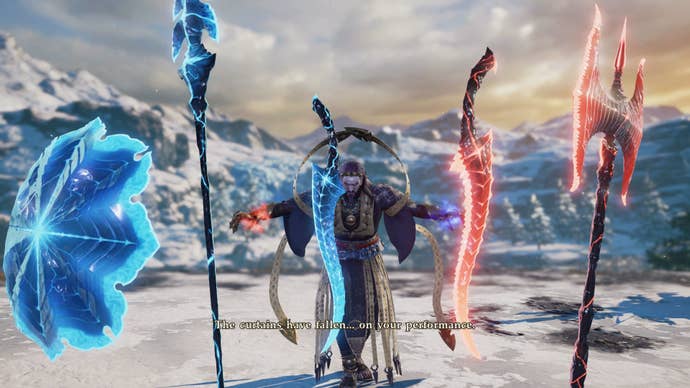
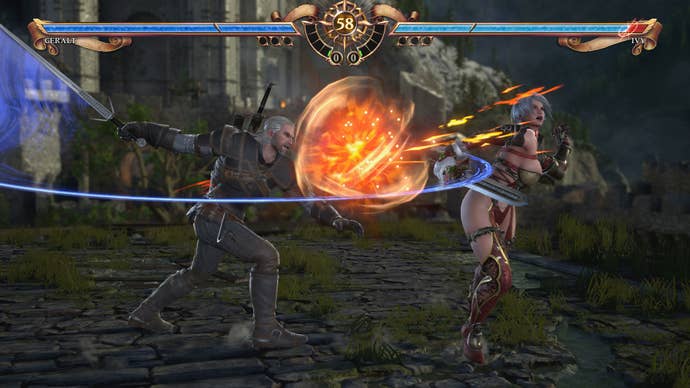
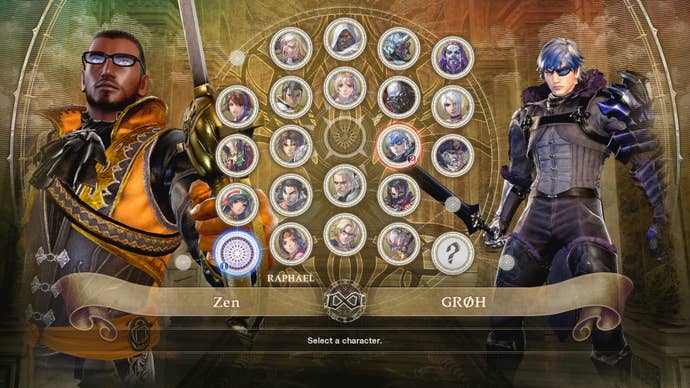
The final new character is Soulcalibur 6's guest character, Geralt from CD Projekt Red's The Witcher games. Soulcalibur as a series has played host to a number of guest characters in the past, including Star Wars' Yoda and Darth Vader, The Legend of Zelda's Link, and God of War's Kratos. Given his focus on weapons and medieval style, Geralt fits into the Soulcalibur 6 roster surprisingly well. He's a mid-range fighter, using his steel sword for quick attacks or silver sword for heavier moves. Geralt's gimmick is his "Signs", magic spells that allow him to close or make space: Igni is mid-range blast of fire, Quen allows Geralt to protect himself while charging, and Aard is a stunning knockback. He's a versatile fighter and one that feels right here thematically.
Gameplay-wise, Soulcalibur 6 continues to try and make the series friendly for new players while keeping veterans excited. Critical Edge attacks return from Soulcalibur 5, using a full Soul Gauge to unleash a powerful attack, not unlike super moves in other fighters. The input for Critical Edge attacks are much easier this time around, using the right trigger on your system of choice. The Soul Charge system returns from Soulcalibur 2, allowing a player to consume a full Soul Gauge to power up their moves or enter an enhanced state.


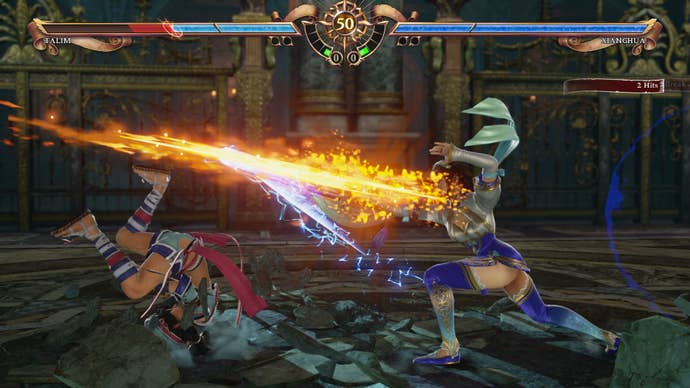
The major new addition to the fighting system is the Reversal Edge. By hitting RB or R1, your character parries an incoming attack and enters both fighters into a cinematic clash. While in this mode, players have a few options. The basic level is hitting one of the three attack buttons: each one beats another like rock-paper-scissors. Alternatively, there are a number of defensive options, like side-stepping or guarding. Depending on which buttons you use, you either win the encounter, lose it, or enter a draw.
Reversal Edge is a system that's meant for newer players; together with Critical Edge, it's meant to give neophytes a way to respond to overwhelming force. I'm ambivalent on the system, as it halts the flow of a match and comes down to guessing what your opponent will do. I'm interested to see how it works out in high-level play though, so my mental jury is still open to being swayed.
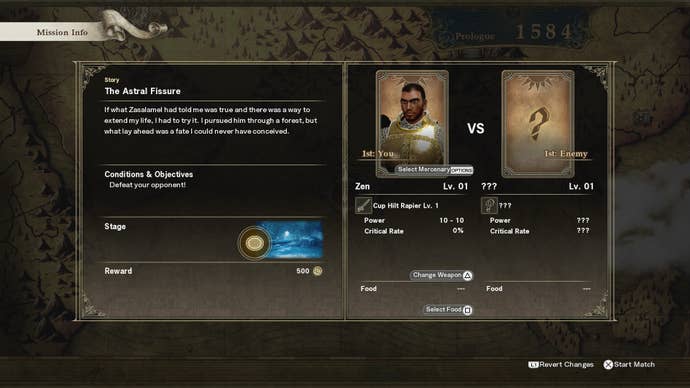
There are two major modes for Soulcalibur 6, covering the major pillars I mentioned before. The first is Libra of Soul, which is a new version of a mode that's been part of the series since Mission Battle in Soulcalibur 2. In Libra of Soul, you create a character and explore the world map, completing missions for experience and currency, somewhat like a role-playing game. Your character, the Conduit, is tied to the events of the main story, closing Astral Fissures and fighting foes that have fallen to evil corruption. It's primarily text-based, with choices and challenges determining whether your soul is weighed towards good or evil.
A mode like this has been a key part of home versions of Soulcalibur and it's good to see such a mode returning in Soulcalibur 6. While the presentation is a bit dry, there are a load of missions and side-missions to undertake. And many of the fights throw weird changes your way, like foes that only take damage from Critical Edges or battlefields where the physics are slightly different.
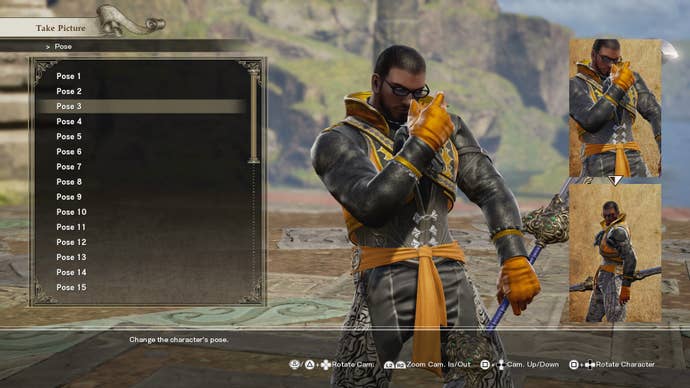
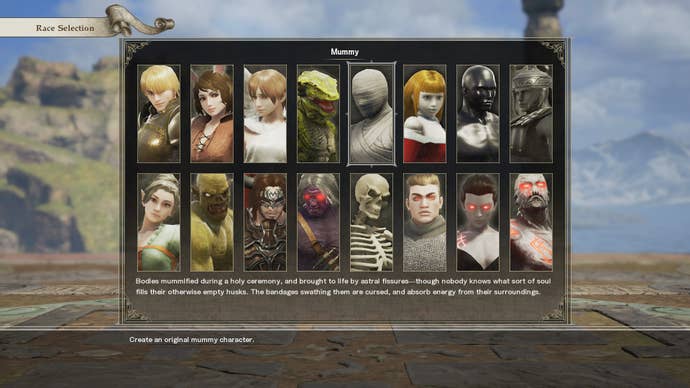
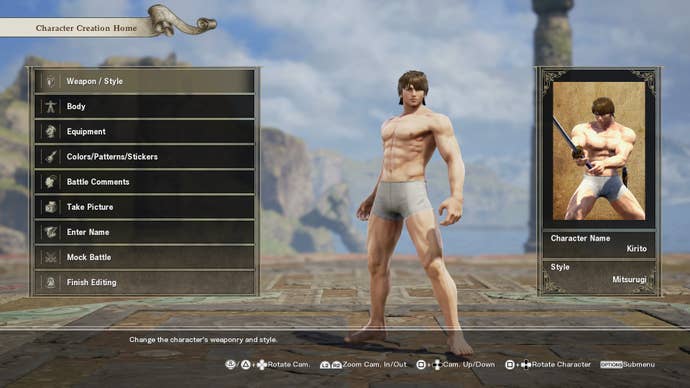
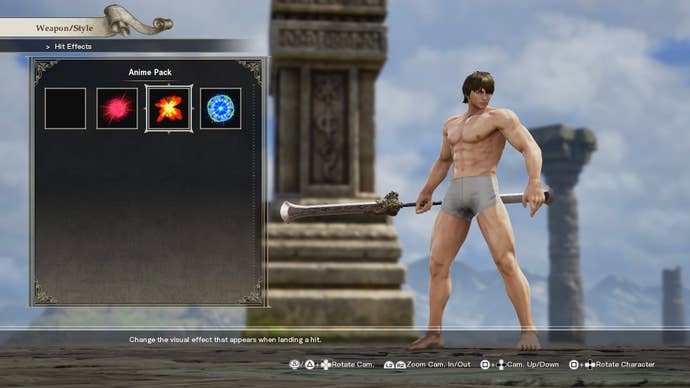
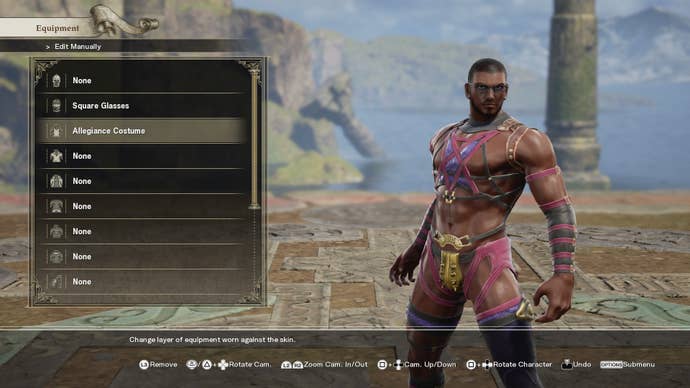


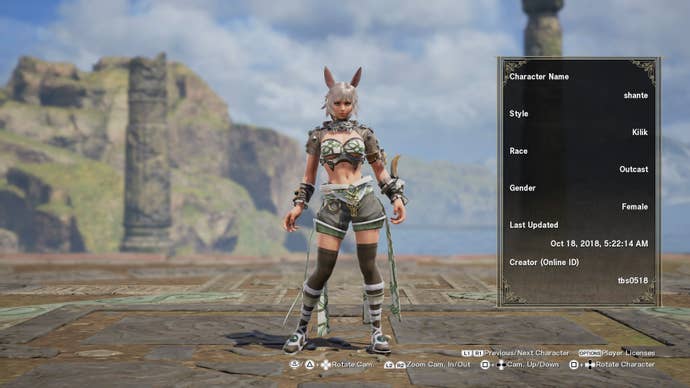
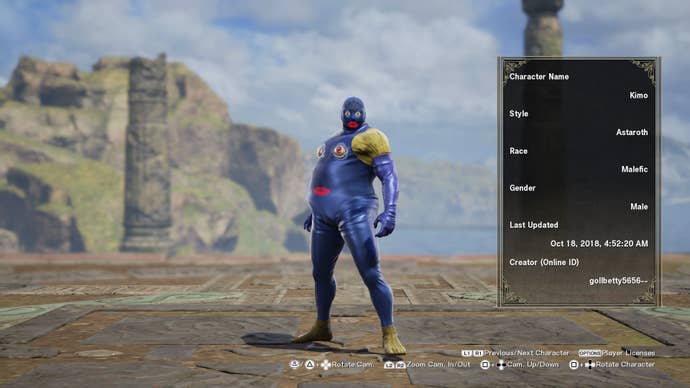
What really makes Libra of Soul great is Soulcalibur 6's robust character customization system. Even from the beginning, character creation is surprisingly diverse. You can choose from a number of races, including Human, Outcast, Lost Soul (essentially Angels and Demons), Lizardman, Mummy, Automaton, Shapeshifter, Colossus, Hidden Village Clan (Elves), Malefic (Orc), Darksider, Revenant, and three types of Malfested, which are corrupted humans like Nightmare. From there, you can change their soul, which determines which Soulcalibur 6 character they play like. Then there's a whole host of appearance options, including face, body, voice, match responses, and clothing. Clothing options not only have multiple colors, but also various patterns. Hell, you can even choose between three types of hit effects or Soul Charge looks.
You can create a character from scratch, edit one of the existing Soulcalibur 6 fighters, or even download created fighters from other players. Character customization has always been my favorite part of Soulcalibur, so I'm glad to see it return here in fine form. Hopefully, the Project Soul team will continue to update it with further clothing options and patterns.


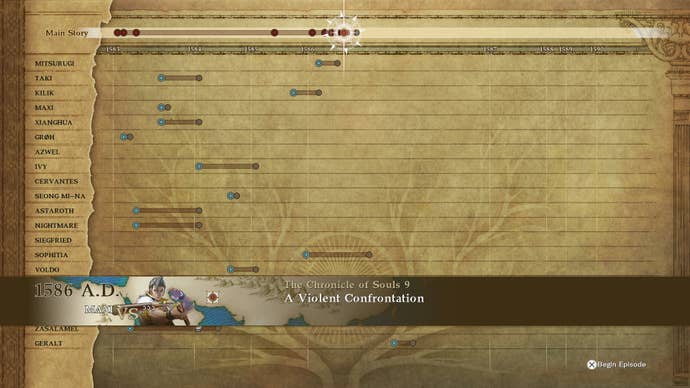
The final mode is Chronicle of the Souls, which is the story mode for Soulcalibur 6. You can play across the storylines of every Soulcalibur character. The main story starts with Kilik, but it switches characters and you can also jump to character-specific stories on the timeline. The tales are presented with faux-canvas artwork and voiceovers; the voice acting isn't great, but it does its job and even Geralt has some entries on the timeline. If you're in the dark as to the motivations and backstories of the Soulcalibur 6 cast, Soul Chronicle is a good place to start. It's solid in terms of a story mode overall, though it can drag with a few playable matches between a ton of plot.
Soulcalibur 6 comes as a strong package simply by offering the modes we've come to expect from the series. The Character Creator, Libra of Soul, and Chronicle of Souls add up to a great package for single-player fighting action, while still retaining all of the offline and online options, like Versus, Training, and Ranked Match. The cast is stronger than Soulcalibur 5's and there's still at least three more characters coming via the Season Pass. I'm not sure how veteran players will feel about it, but for the mainstream player, Soulcalibur 6 is a game that's easy to pick up and play. And that makes it easy to recommend, even if it didn't stun me as much as some other recent fighters.
